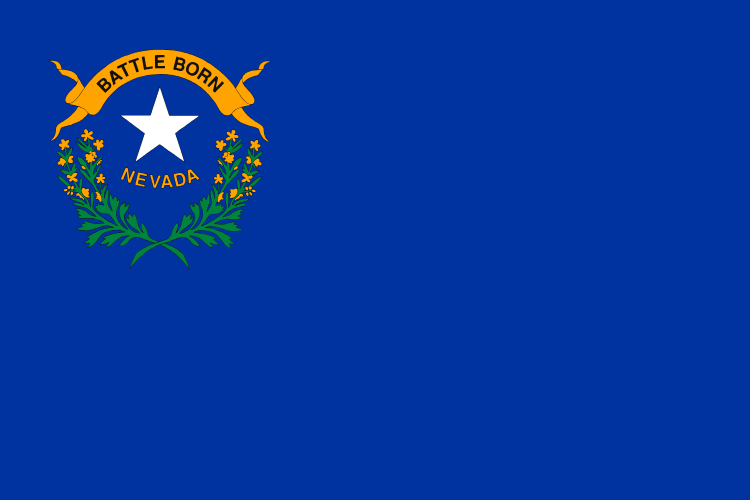In this podcast, Karen Tynan, the West Coast chair of the firm’s Workplace Safety and Health Practice Group, and Noel Hernandez from the firm’s Las Vegas office discuss Nevada’s newly adopted heat illness regulation. The regulation, which went into effect on November 15, 2024, applies to employers with more than ten employees and requires them to provide employee training and conduct a written job hazard analysis. Noel and Karen review the regulation’s trigger temperature and outline the responsibilities of employers, which include providing drinking water, scheduled rest breaks, and cooling measures. They also share valuable insights for Nevada employers affected by the new regulation.
Nevada’s New Safety Rules: Can Employers Beat the Heat?

Transcript
Announcer: Welcome to the Ogletree Deakins Podcast where we provide listeners with brief discussions about important workplace legal issues. Our podcasts are for informational purposes only and should not be construed as legal advice. You can subscribe through your favorite podcast service. Please consider rating this podcast so we can get your feedback and improve our programs. Please enjoy the podcast.
Karen Tynan: Hello everyone, and thank you for joining us for the Ogletree Deakins Podcast. My name is Karen Tynan, and I’m a shareholder in the Sacramento, California office and chair of the West Coast OSHA practice. Here with me today is a fellow member of our workplace safety practice group, Noel Hernandez from our Las Vegas office. We are talking about the Nevada heat illness regulation, an important topic for Nevada employers. Are you ready, Noel?
Noel Hernandez: Yeah, let’s go.
Karen Tynan: So first, let’s talk broadly about this new heat illness regulation. When was it adopted? Tell us about the trigger temperatures, all that. Give us that first big look at the regulation.
Noel Hernandez: Well, Nevada has been trying to pass these heat illness regulations for years. And finally on November 15th, 2024, they were filed and signed off on, and so they’re currently in effect. They did not waste any time. And so the regulations, they affect employers with more than 10 employees. And the interesting thing that Nevada did was they didn’t have any provision about a trigger temperature like the other state heat illness regulations that we’ve seen. These regulations are silent on trigger temperature. And I want to note that the regulations don’t apply to employees who work indoors in a climate controlled environment, and that includes motor vehicles with a properly functioning climate control system.
Karen Tynan: And I think that is an important distinction because a lot of times, employees and vehicles, that’s a top question that we get. So unlike maybe some other states that have indoor regulations, this is only for outdoors right?
Noel Hernandez: Right.
Karen Tynan: Well, because most people indoors, it’s a climate controlled environment, so that sounds good. Now I saw that this regulation has quite a few definitions in it that we need to understand. So what are some of those definitions?
Noel Hernandez: So there are two main definitions that the regulations provide. The first one that they define for us as heat illness, and that means a medical condition resulting from the inability of the body to cope with a particular heat load. So that could be anything from a mild heat exhaustion to severe heat stroke. The second definition that they provide is occupational exposure to heat illness. This is any working condition that creates the reasonable likelihood that heat illness could occur, and that includes air temperature, relative humidity, radiant heat from the sun or other sources, conductive heat from the ground or other sources, movement of air, the severity and duration of workloads and protective closing and personal protective equipment worn by an employee.
Karen Tynan: Okay. So I like that for a foundational understanding. Now tell me, what are some of the program requirements for these Nevada employers? What does their program have to have?
Noel Hernandez: So let’s break down the components of the regulation. First, the regulation requires that employers prepare a written job hazard analysis, and this analysis needs to contain a list of all job classifications and tasks where employees have occupational exposure to heat illness for more than 30 minutes of any 60 minute period. Another important program requirement is that employers are required to designate a person to monitor working conditions, contact emergency services if needed, and carry out the safety program. Employers are also required to have a provision addressing the use of drinking water, rest breaks, means of cooling for employees and the mitigation of work processes that may generate additional heat or humidity. And then the last main requirement is that there needs to be a provision about training and procedures for responding to an emergency.
Karen Tynan: And so this sounds very similar to quite a few other states like for example, California, Washington, Oregon. And so having that program and that plan is definitely critical. Now I notice that there’s also training requirements. Can you tell us more about the training requirements for heat illness?
Noel Hernandez: I noticed in other heat illness plans, there’s really robust training requirements. The Nevada regulation, they kept it pretty simple and so it gives the employer a lot of room to kind of customize it to their needs. But all it really says is that the employers are required to provide training for employees and job classifications with occupational exposure to heat illness, teaching them to recognize and minimize heat illness hazards.
Karen Tynan: Okay. And so other states have a lot of very specific requirements about a climatization training and let’s say training about how much water you have to drink per hour at certain temperatures, things like that. But it sounds like the Nevada training can be much more generic and maybe a little bit simpler. Is that your feeling on it?
Noel Hernandez: Yeah, that’s my takeaway. And I believe that Nevada OSHA, they’re giving the employer the opportunity to customize the training to what fits their industry.
Karen Tynan: Yeah, I think that’s a good point because certainly construction outside, and we know Nevada is always booming with the housing market. Construction outside may be different from other locations and the needs for training. So lots of flexibility for those Nevada employers. So in other states now supervisors have to have separate training topics, like they’ll have to have more training about emergency response or they’ll have to have a more training over a particular time period. Did Nevada do any of that with this new law?
Noel Hernandez: Nevada did not. The regulations don’t require any separate training for supervisors. The additional emergency response training that you mentioned, they probably did not include that because these regulations require the employer to designate a specific person to be in charge of the emergency response or to carry out that emergency response. So yeah, totally silent on additional supervisor training.
Karen Tynan: Okay. So that makes it a little easier in Nevada. Now I want to talk with you. So under this regulation, this new Nevada heat illness regulation, when an employee shows signs of heat illness, what is a Nevada employer required to do when that employee may be overly sweating or their face is red or they say they’re nauseated? What has to happen at the job site?
Noel Hernandez: So if an employee shows signs of heat illness or demonstrates symptoms of heat illness. Under the regulations, the employer is required to monitor the employee to determine whether medical attention is necessary and ensure that the employee is taken to a location where an emergency services provider is able to reach the employee.
Karen Tynan: Okay, that’s helpful, Noel. Now, I just recently litigated a case in California where after an employee who was exhibiting some symptoms of heat illness, the employee actually just said, I’m going to go sit in my truck for a little bit and drink some water and then drove by themselves later to one of those 24 hour clinics. And that certainly was an issue in my case. So I think it’s important for employers to have that plan for what they are going to do for that employee that may need medical attention. And certainly the plan is never going to be that the employee drives themself or we’re just relying on emergency services when we are way in a remote location, things like that that I think happened in Nevada. Do you agree with that for our Nevada employers?
Noel Hernandez: I agree. And I also want to mention that these regulations, this is the bare minimum that Nevada employers are required to do for the employers can take additional steps like giving the employee water and making sure they’re in the shade, things like that that are not specifically spelled out in the regulation, but can also be helpful for employee who is showing the heat illness signs.
Karen Tynan: I like that you’re talking about this regulation as a floor, not a ceiling right? And we do know that other states have specific requirements such as shade, the water, also acclimatization. Some other states require that you work people into being in the heat over periods of time. And I think it’s important to recognize, especially multi-state employers, they may be incorporating some of their best practices from other states in Nevada. And I do like that, Noel, your call-out to that, and I’ll leave this in before we finish up here.
The top citations and we pull data all the time right off the Federal Department of Labor database and top heat citations usually involve two things, one of two things, either water, lack of water or lack of training. And those should be pretty easy to fix because you should be able to train your workers and it should be fairly easy to have either a case of water, cases of water, the ice chest, all of that at the work site as a best practice. Now I want to ask you, can you give us your big takeaways with the Nevada heat illness regulation? Tell us about what you think these Nevada employers listening should put on their action list or their audit list.
Noel Hernandez: So these regulations are really aimed to ensure that Nevada employers are taking necessary steps to prevent heat illness among their employees by providing adequate training and having effective emergency response procedures in place and making sure that there is the drinking water and reliable shade. I’ve seen employers have cooling towels and stuff like that. So getting creative, making sure… The summertime here is so brutal. So making sure that the employees are staying cool, maybe taking extra breaks. There’s a lot of creative solutions that can be done, and I think Nevada is really trying to get the employers to think about this more.
Karen Tynan: I like that conclusion and I’m a big fan of the cooling towels as well as the water as close as practicable, shade, the frequent breaks, and having supervisors really monitor folks. I will say that I think training can be helpful with having employees able to recognize the signs and symptoms of heat illness. And I will say that I have never had a heat illness case where the employee didn’t have an underlying condition. And so I think the training is critical to help employees understand how heat illness can affect them. And then having the supervisors, having managers, having everyone on the team know what those symptoms are so they can watch out for their fellow workers. So I really do appreciate it, Noel. We want to say thanks to the audience for listening today. Look for our blog articles on ogletree.com. Noel is a frequent blog poster about Nevada safety. You can check out our practice page, the Workplace Safety Practice Group on the same ogletree.com website, and also we post frequently on LinkedIn with great updates. Thanks for listening. Stay safe out there.
Announcer: Thank you for joining us on the Ogletree Deakins Podcast. You can subscribe to our podcasts on Apple Podcasts or through your favorite podcast service. Please consider rating and reviewing so that we may continue to provide the content that covers your needs. And remember, the information in this podcast is for informational purposes only and is not to be construed as legal advice.
Speakers
Topics

Workplace Safety and Health
The Occupational Safety and Health (OSH) practice of Ogletree Deakins is characterized by the knowledge and credibility of our attorneys, and the exceptional level of service that we provide to our clients.




